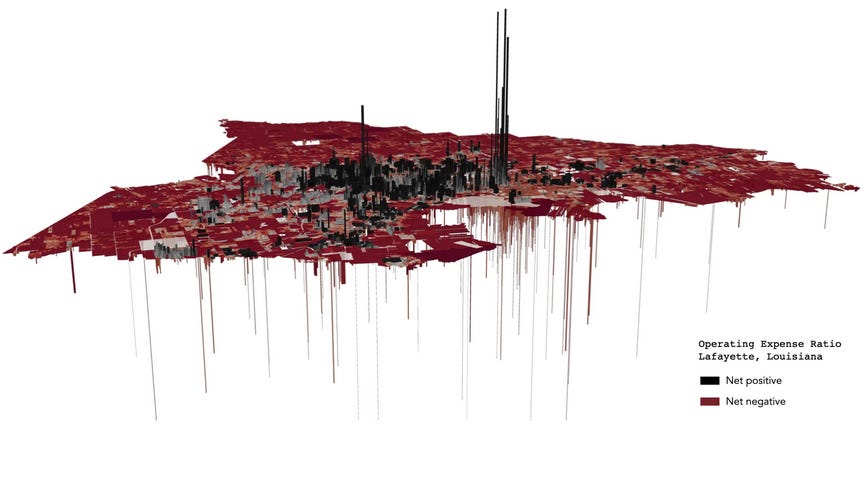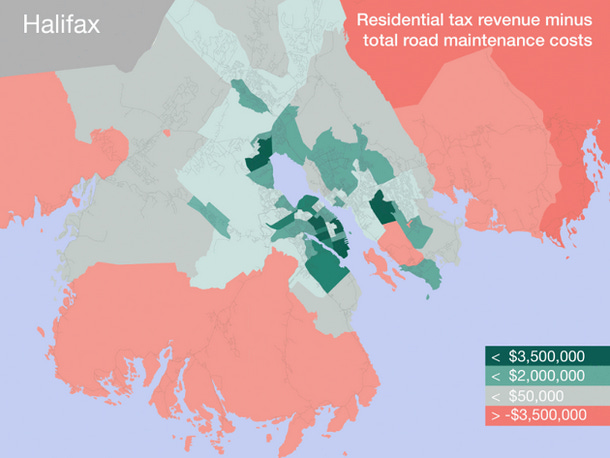Council plans for downtown improvements
Councillor Morse adds strategic reserves to Halifax’s summer of planning
On Tuesday April 29 council met for regular meeting. The bulk of the meeting was in-camera items, which occupied most of the afternoon. Those private debates were bookended by two public sections as boring as they will be impactful on the city of Halifax circa 2040.
Up first was a presentation from the Downtown Halifax Business Commission who shared with council their five year plan, a little something they call Vision 2030. They officially launched this plan last summer and have been doing the rounds pitching it to anyone who will listen ever since.
The commission’s representatives told council that they did some polling, and it turns out that most people love downtown, and a small percentage of people hate finding parking. This is a bit funny (not haha) because if you look at aerial photographs from times when people didn’t love downtown so much, like 2001, you can see abundant downtown parking. It seems as though we can either have a cool downtown or plentiful parking, but not both.
To sidebar from council for a second, paywalls will start on this website next week, and if they were in effect this week, the paywall would start here. Please consider becoming a paid subscriber right now!
Since we’re in a sidebar anyway, in looking for old photos of Halifax, I found overhead photos from December 8, 1955, and I thought they were cool. You might too: one and two.
Back to council and the parking vs fun paradox. Since the business commission knows that large parking lots are the anathema to a fun lively downtown Vision 2030 focuses heavily on pressuring the city in to implementing Bus Rapid Transit and the other much anticipated and so far poorly delivered transportation strategies.
The business commission laid out the economic case for why council should invest in Vision 2030 and Halifax’s downtown. In their presentation they had a slide deck featuring the work of a group called Urban 3 who help cities manage their money. Urban 3 finds that in almost every city if you look at where municipal revenues come from and what municipal expenditures cost, you can see that downtown funds the subsidies that enable low suburban tax rates for luxury municipal service delivery.
Urban 3 takes this data and makes sexy graphics that show what and average municipal revenue generation map looks like
And maps of what it costs to deliver municipal services.
Those are obviously not Halifax examples, the city has never hired Urban 3 to get one of these maps done. Instead in we hired Stantec in 2013 who found the same thing as the Urban 3 maps, but the folks at Stantec used the data to write a report instead of making a map. In 2017, however, Happy Cities made a map when they added up municipal tax revenue and subtracted road maintenance costs.
That fiscal imbalance is a huge problem, and the city of Halifax’s first phase of fixing the plan was the Centre Plan. One of that plan’s main goals was to relax zoning to incentivise dense development on the peninsula and Dartmouth inside the circumfrential highway to maximize the efficiency of municipal service delivery in the Centre Plan area thus reducing municipal expenses. With the plans for Strawberry Hill, Almon and Robie, the towers going up on the Dartmouth side of the Macdonald bridge, the planned development for the Dartmouth Mall, Woodlawn and Penhorn Plazas, it’s safe to say that the Centre Plan has been wildly successful.
So with all of that as support for their arguments, plus the inherent desire to see one’s advocacy work success otherwise why would they be presenting this to council in the first place, the business commission asked council to see if they could do the parts required of the city for Vision 2030 to succeed.
The councillor for the area, Laura White, put a motion on the floor immediately following the presentation, asking city staff to:
Provide a staff report that includes an assessment of the Halifax Downtown Business Commission’s Downtown Halifax Vision 2030 plan to determine how it aligns with current Municipal priorities. The staff report should also include an implementation plan along with an accountability structure to help guide the completion of the Municipal components of the plan.
There was a bit of a procedural brew-ha-ha over whether or not council could join the Vision 2030 presentation and a motion from councillor Laura White to see which of Halifax’s strategies overlap with Vision 2030 to see if anything that’s in both plans could be expedited on the city’s end. But worry not, the rules that govern council meetings have the flexibility to allow our elected representatives to have a fulsome debate on important issues.
Once the debate itself got underway, councillor Sam Austin brought up his issues with the motion, arguing that Downtown HRM is more than just Downtown Halifax and the city should be investing in the whole downtown core, which includes Dartmouth. He argued that the city needs to do this all at once because if we all agree that we want downtown to be a cool place for one-of-a-kind attractions, then we will probably only put one in our downtown, which is on both sides of the harbour. He was worried that the implementation part of the motion may inadvertently remove a step of council’s decision-making, which would hinder efforts at holistic planning and may inadvertently shortchange Dartmouth.
Cathie O’Toole, the city’s chief administrative officer, told Austin that the city’s strategic plans are holistic, so anything that aligns with those plans should, in theory, not inadvertently shortchange Dartmouth. On top of that, even an implementation plan would still require council’s approval before it was implemented by staff. Austin, unconvinced, asked the motion be split into two parts so the implementation vote could be separate, believing it to be premature.
After a bit more debate that featured interludes about how downtown, and really everywhere as dense as Fairview or Dartmouth pays more than their fair share of taxes and deserves far more investment (and an interlude where deputy mayor Tony Mancini reminded the public (read: Tim Houston) that in the same way downtown pays for the rest of the HRM, the HRM pays for the rest of the province), and after some interludes about making sure the private sector and province are also buying into Vision 2030, councillor Laura White’s motion passed. Part one, see how the city and commission plans align, passed unanimously, part two about implementation saw Sam Austin, Patty Cuttell, and Trish Purdy unsuccessfully vote no.
Council voted to give themselves a pay raise of 4% and the mayor a pay raise of 2%. Councillor David Hendsbee told council he wouldn’t vote for this because he didn’t think it was right that councillors vote on their own pay. He suggested that instead council should set pay rates for the next council on their way out the door. Hendsbee did not, however, try to defer this motion until June of 2029 or try to amend this motion to achieve that goal. Councillor John Young also voted against this motion, and Hendsbee likely could have gotten a seconder and had this debate. Instead, Hendsbee’s opposition to his pay raise was limited to a vote of no.
Staff will devise a plan to keep active transit routes free of stray branches and schedule meetings with councillors to obtain their feedback on the city’s upcoming five-year strategic plan.
Councillor Kathryn Morse also had her eye on long-term planning and put forward a motion asking for a plan to manage Halifax’s savings accounts to ensure they always had money. This is too simple an explanation of both strategic reserves and Morse’s motion, but the important part for now is that this is being folded into the city’s summer of strategic planning and mayor Andy Fillmore’s budget reform motion.
Speaking of strategic reserves, the Halifax Convention Centre isn’t losing the city money anymore. It’s not paying for municipal services, so it’s still a drain in that way, but at least it’s not directly costing us money anymore. More information on this at a future meeting when Events East people are in attendance to make a presentation to council.
Councillor Billy Gillis pulled a motion off the consent agenda about municipal funding for municipal-run community events. He wanted to know if community-funded community events could get some of this money and tried to amend the motion. This faced strong opposition from councillor Shawn Cleary who said he couldn’t add money to a budget they’d just approved a few weeks ago. Gillis, after asking clarifying questions about how to procedurally achieve his goal of getting funding for community events in Lower Sackville, withdrew his amendment. With the excitement over, council decided to fund its annual events like KANA’TA: HFX Canada Day, tree and menorah lighting and the Clam Harbour beach sandcastle festival.
Also at this meeting, but in a future story on GrandParade.news, a public hearing about flood plain mapping in Bedford.




